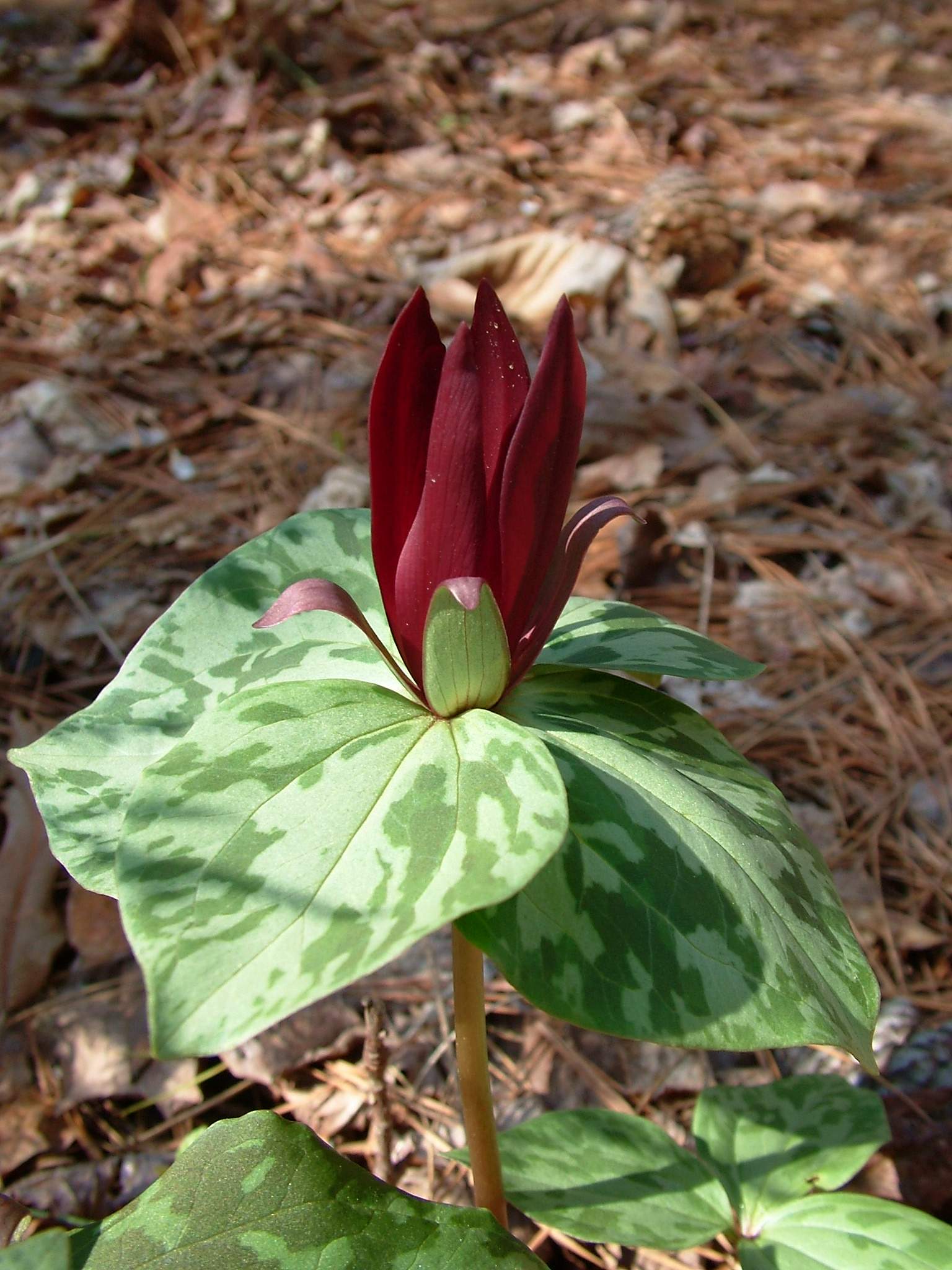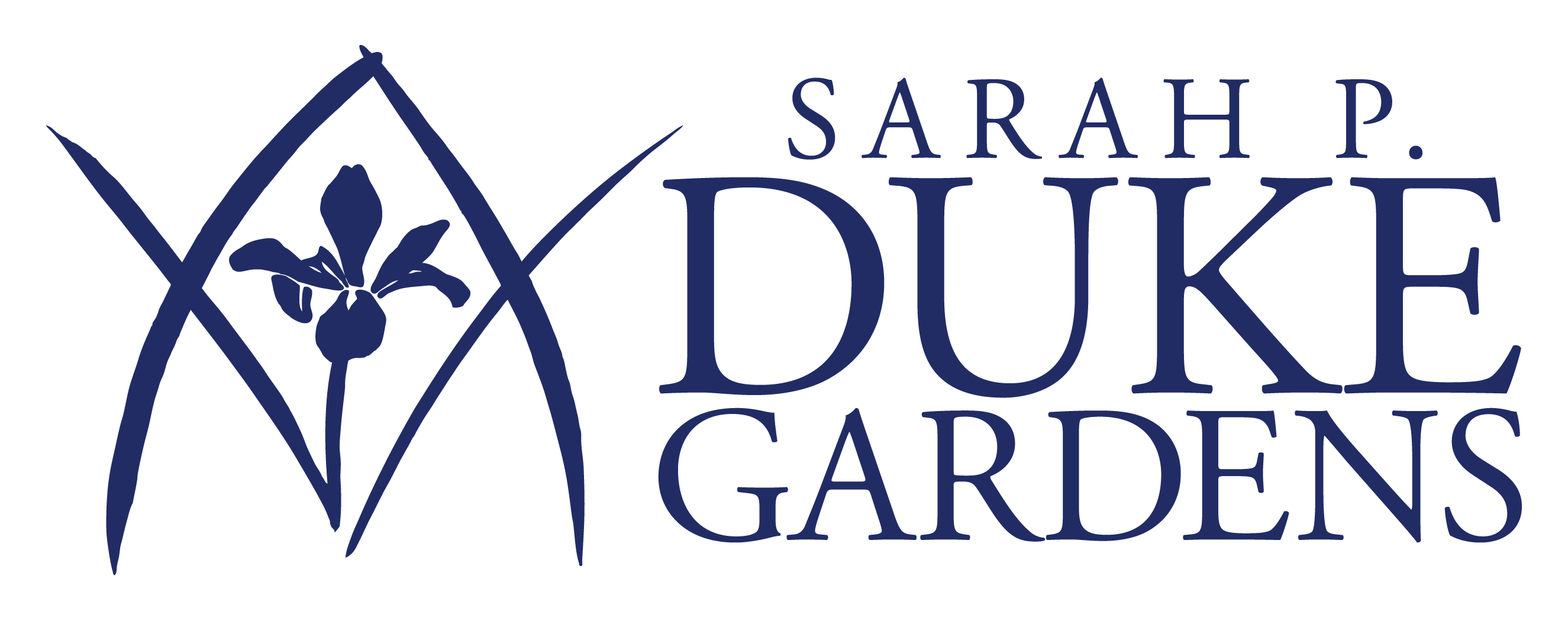Botanical name: Trillium cuneatum
Common names: little sweet Betsy, toadshade, wood trillium
Family name: Melanthiaceae (Bunchflower family)
Native range: Southeastern United States
Location in Duke Gardens: Blomquist Garden of Native Plants
USDA Hardiness Zones: 5-8
This native plant has no shortage of common names—depending on who you talk to, it might be little sweet betsy, purple toadshade, whippoorwill flower or any variation on the above. Whatever you call it, there’s no question it’s lovely, especially in moist woodland bottomlands and slopes where it can form dense colonies along the forest floor in March and April before the trees leaf out.

Trilliums are a diverse and varied group of wildflowers that are easy to identify thanks to their structural simplicity: three leaf-like bracts topped with a single flower with three sepals and three petals (although depending on the species, they may or may not be easy to tell apart from each other). They can be further divided into two main morphological types—pedicellate trilliums, where the flower dangles from a stalk, and sessile trilliums, with no flower stalk. After that, identification can get tricky.
Little sweet Betsy is a sessile trillium, as well as a member of the Trillium cuneatum complex, a group of related species and subspecies that even professional botanists and taxonomists have trouble distinguishing from each other. As a result, this species is often mistaken for spotted trillium (T. maculatum) and the red form of the yellow trillium (T. luteum), both of which are also included in the Blomquist Garden’s trillium collection. However, most of the species in the T. cuneatum complex have overlapping but ultimately different geographic ranges. If you find a sessile trillium growing wild in the North Carolina Piedmont, it’s almost certainly little sweet Betsy.
Like many native plants with maroon flowers, little sweet Betsy has an unpleasant, rotten scent to attract flies and other carrion-eating insects. Its seeds are attractive to ants, which carry them back to their nests where they will later sprout. Because they are slow-growing and only above ground for a brief period each year, it can take a long time for populations to expand, so every plant is precious. Be sure to stay on the paths to avoid accidentally damaging or crushing them.
Look for this and many other species of trilliums right now along the Blomquist Garden of Native Plant’s Trillium Walk, as well as scattered throughout the Blomquist understory (especially between the McNabb Bridge and the Millstone Pond) with other ephemeral wildflowers.
